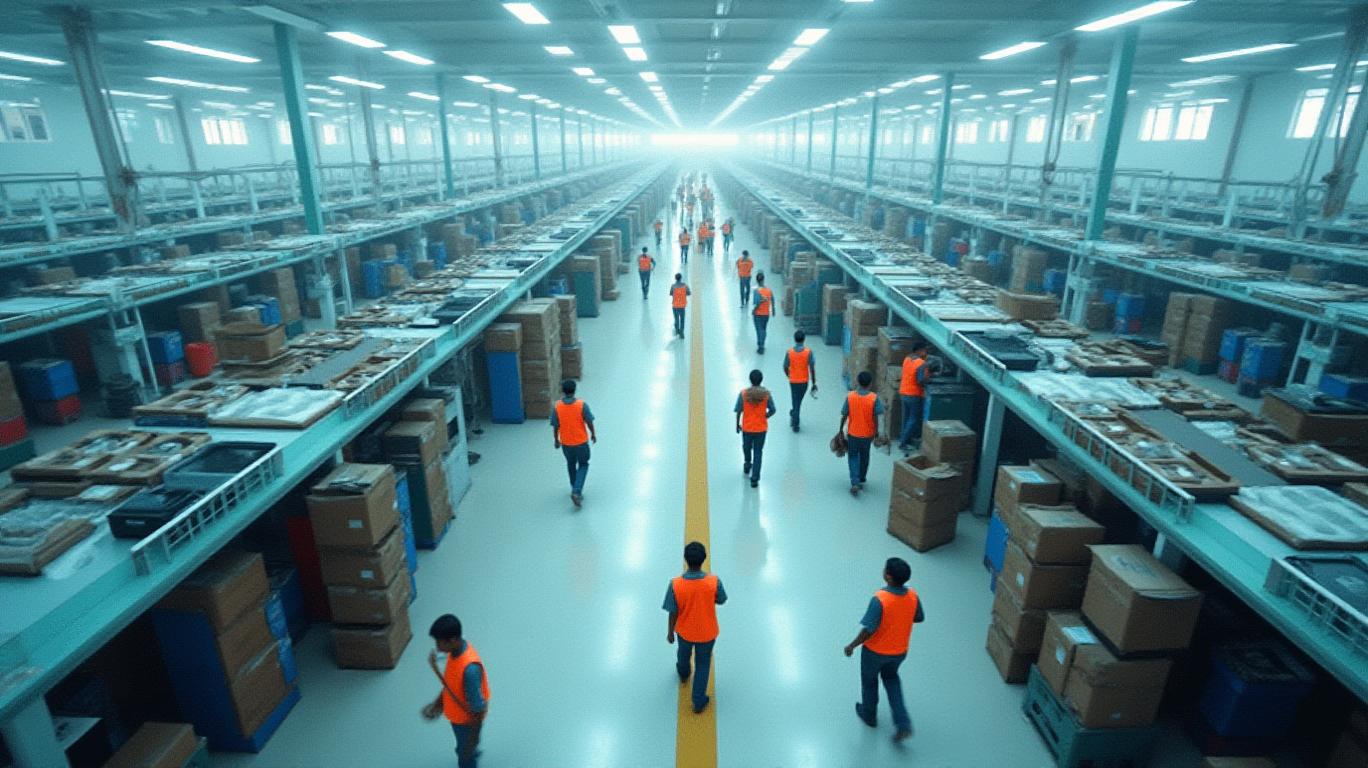Apple's India Gambit: Navigating Geopolitical Risks to Secure Supply Chains and Investor Returns
The U.S.-China trade war has turned Apple’s manufacturing strategy into a geopolitical chess match. As the tech giant accelerates its shift to producing all U.S.-bound iPhones in India by 2026, the move is as much about tariff avoidance as it is about navigating escalating supply chain fragility. But with 75% of iPhone components still sourced from China and execution risks mounting, investors face a critical question: Is Apple’s India pivot a masterstroke or a minefield?

Geopolitical Drivers: Tariffs as a Manufacturing Catalyst
Apple’s decision to relocate $23 billion in annual iPhone production to India is a direct response to U.S. tariffs on Chinese imports, which now exceed 145% on electronics. By 2025, tariffs threatened to add $900 million to Apple’s Q3 costs, forcing an urgent pivot. The company’s Q2 2025 results showed progress: 50% of U.S. iPhone sales originated from Indian-manufactured units, up from 16% in 2024. But the clock is ticking—the goal of doubling India’s iPhone output to 30 million units annually by 2026 hinges on overcoming a labyrinth of geopolitical and operational hurdles.
Supply Chain Vulnerabilities: China’s Unbreakable Grip
While Apple’s partnership with Indian manufacturers like Foxconn and Tata Electronics has expanded capacity, its supply chain remains shackled to China. Over 200 components, including semiconductors, OLED displays, and casings, are still sourced from Chinese suppliers. Even in India, 5–10% higher manufacturing costs due to imported parts and logistical inefficiencies threaten profit margins.
Quality control adds another layer of risk. A 2023 defect in Tata’s Hosur plant, where half of iPhone casings failed Apple’s standards, underscores the challenges of replicating China’s precision. Meanwhile, Apple’s March 2025 airlift of 5 planeloads of iPhones from India and China to the U.S. to beat tariff deadlines highlights the fragility of its contingency plans.
Valuation Risks: Delays and Overruns Cloud the Horizon
Analysts are skeptical
will meet its 2026 deadline. S&P Global estimates that to meet U.S. iPhone demand (65 million units annually), India’s production must double from its current 15% global share. Yet, Chinese engineers remain critical to complex manufacturing processes, and India’s regulatory barriers for suppliers with Chinese ownership could slow progress.The financial stakes are high. A delayed shift could force Apple to absorb $900 million in quarterly tariffs, squeezing margins already pressured by a 5% year-over-year revenue increase in Q2 2025. Until execution clarity emerges, Apple’s valuation—currently trading at 30x forward earnings—may remain overstretched.
Strategic Hedging: Play the Partners, Not the Stock
Investors seeking exposure should look beyond Apple’s shares. Consider these plays:
- Indian Manufacturing Partners:
- Foxconn (2317.TW): The largest iPhone assembler in India, with a $435 million semiconductor plant in Tamil Nadu.
Tata Electronics (subsidiary of Tata Motors): Expanding assembly lines for older iPhone models. Monitor its stock (TATAMOTORS.NS) for quality control progress.
Semiconductor Plays:
- TSMC (TSM): Apple’s critical foundry partner, benefiting from rising demand for advanced chips.
- ASM Pacific (ASM.N): Key in semiconductor packaging, a step often overlooked in supply chain discussions.
Conclusion: Proceed with Caution
Apple’s India pivot is a bold bet to insulate itself from geopolitical storms, but investors must tread carefully. While the shift creates opportunities in Indian partners and semiconductors, Apple’s stock remains a high-risk play until execution milestones—like Q2 2025 margin reports and progress on local component sourcing—are met. Until then, focus on the enablers of Apple’s supply chain rebirth, not the company itself.
The geopolitical chess match isn’t over—yet the winners will be those who bet on the players that control the next move.

Comments
No comments yet